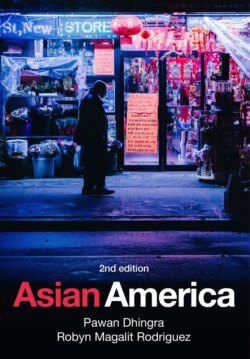Читать книгу Asian America - Pawan Dhingra - Страница 25
Global political economy
ОглавлениеThe increasing inter-dependency between countries also complicates immigrants’ adaptation. Globalization refers to the connections between nations economically, culturally, politically, and socially. For example, the fact that we learn about what is happening on the other side of the planet instantaneously through the internet, or the fact that most of the products we buy are made in another country, is evidence that our lives are being shaped by forces beyond our country. A global political economy perspective draws attention to the relations between nations that spur migration (Baldoz 2011). Because developing countries do not have enough employment opportunities for their population, or the jobs pay too little or lack options for mobility, individuals seek fortunes elsewhere. But individuals rarely just migrate anywhere. One’s country’s relationship with other nations influences where one migrates to. For instance, colonial histories between countries create lasting pathways of immigration. Also, to develop their economies, countries will train citizens for jobs in other countries. Migrants are then expected to send back money or expertise to their homeland (Rodriguez 2010). Would-be migrants hear of jobs in a particular country through state- or corporate-sponsored advertisements or through their personal networks. In other words, to understand immigration, one must understand the relationships between nations.
A global political perspective downplays the assimilationist model of immigration and adaptation. Assimilation theory frames migrants as independent actors who seek out a new country to make their living and settle their families. In contrast, a global political economy perspective highlights the sustained ties between migrants and their homeland. Immigration is not so much an act of pure volition as a consequence of global economic and political factors, within which immigrants make calculated decisions. Within this perspective, it makes sense that immigrants maintain transnational ties to their homeland. Transnationalism originated as a topic of study as a critique of assimilation theory’s assumption that one’s adopted nation defined immigrants’ subjective and material experiences. Instead, immigrants can live across borders. For instance, they may both receive and send money from and to a homeland, follow the political and cultural changes of the nation, visit home often, and more. Rather than consider immigrants’ adaptation relative to the United States, as is the case within assimilation theory, it may be more relevant to consider it within a broader diaspora or widely dispersed community.
A global political economy perspective often is combined with other ones. For instance, global dynamics connect to racial formation processes. In such cases, analysts frame international relations within a global power inequality, with developed nations utilizing immigrants from developing nations to their advantage (Parreñas 2001). Yet more recently, scholars have come to analyze immigrants’ transnational lives within an overall assimilation paradigm. Immigrants’ commitments abroad need not detract from their general integration within the United States (Levitt and Waters 2002). Transnational individuals can follow both homeland and US politics, for instance. Experiences in the homeland can give individuals the cultural tools, such as pride in their background, to help them feel supported when in the United States (Smith 2006). So, while transnationalism and globalization are receiving increasing attention, what they mean for immigrant groups is not settled.
